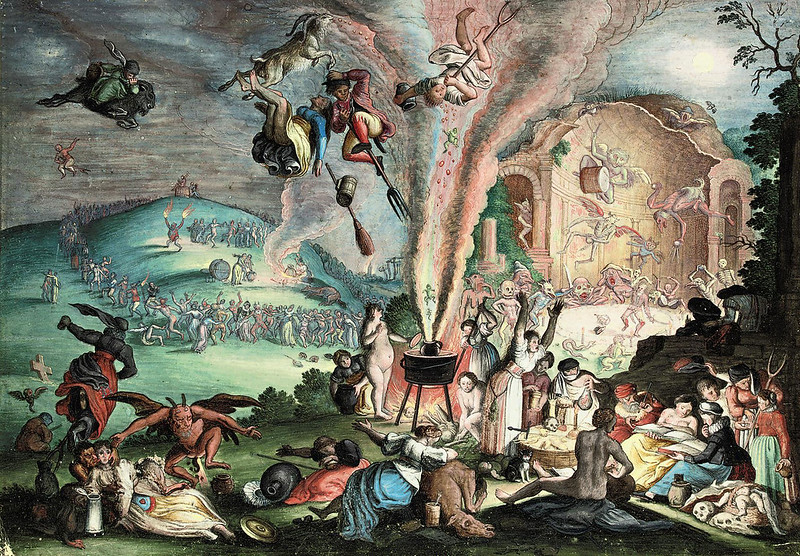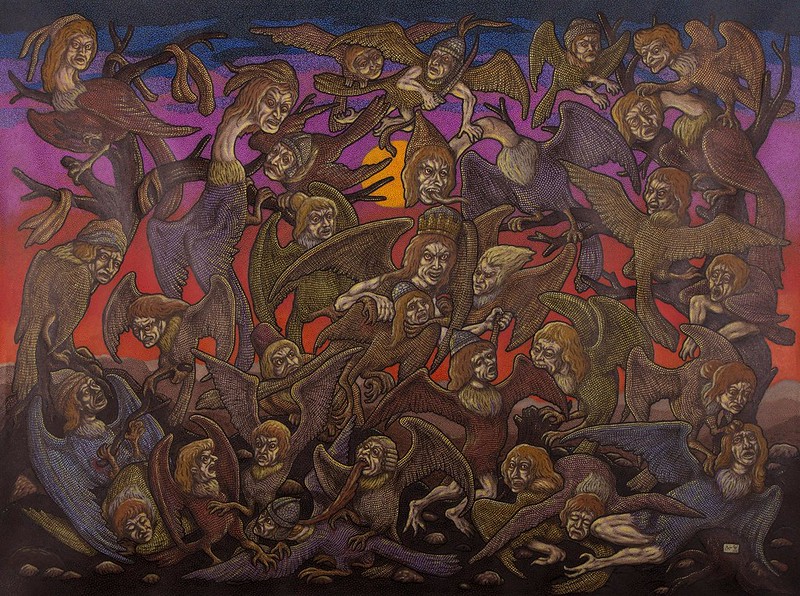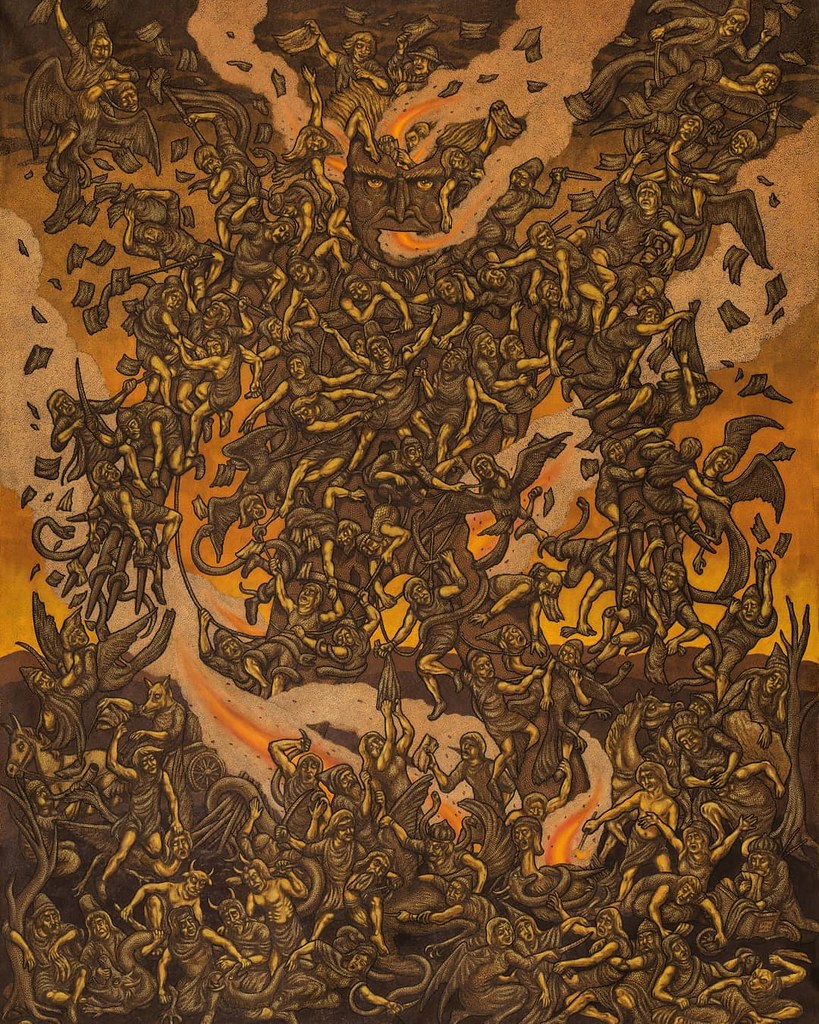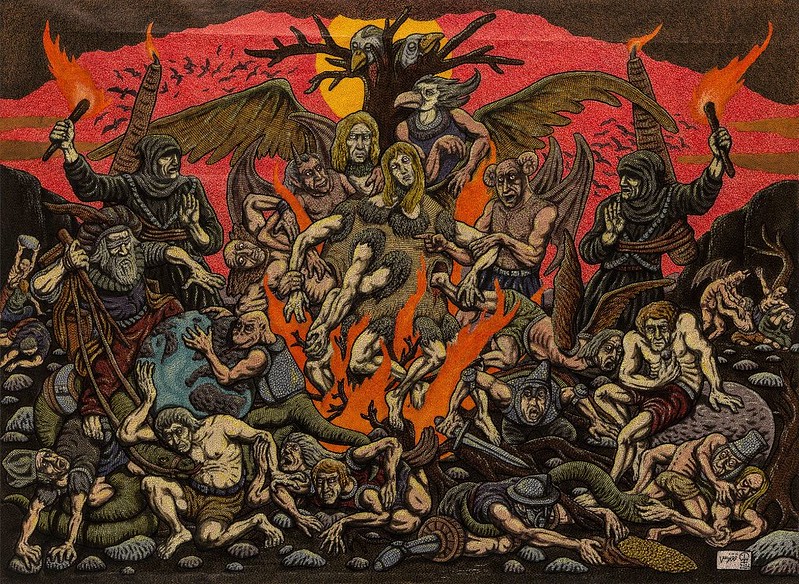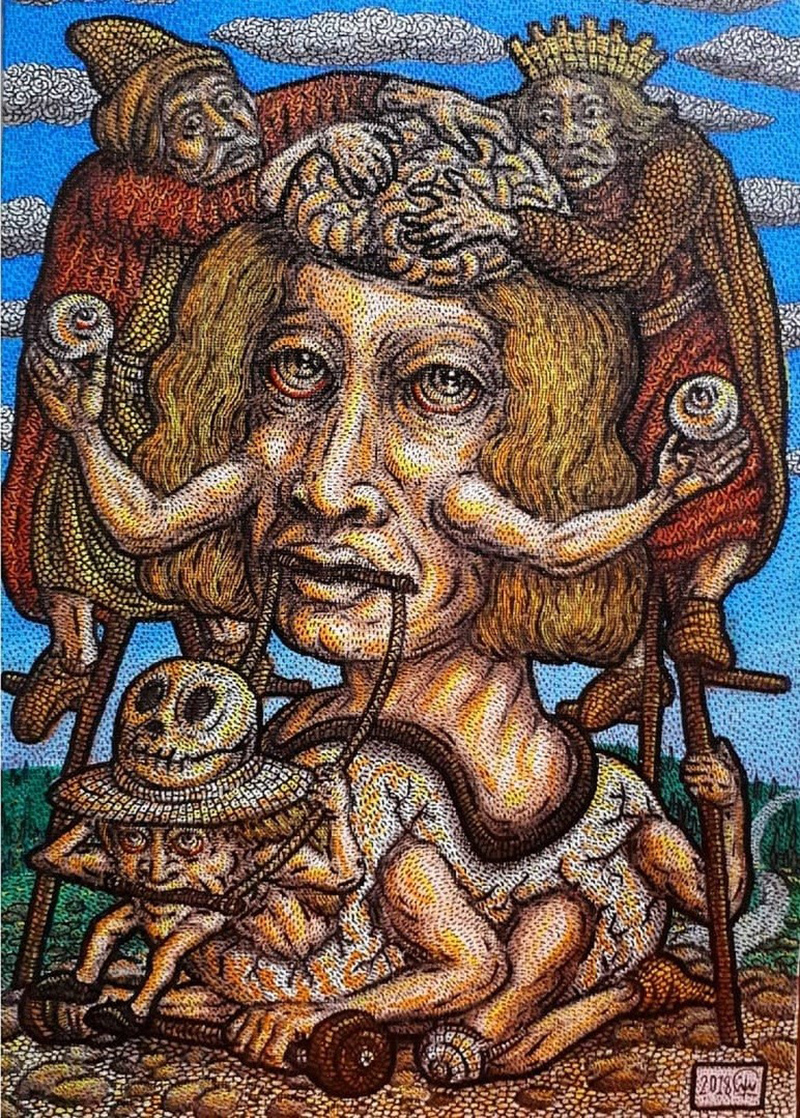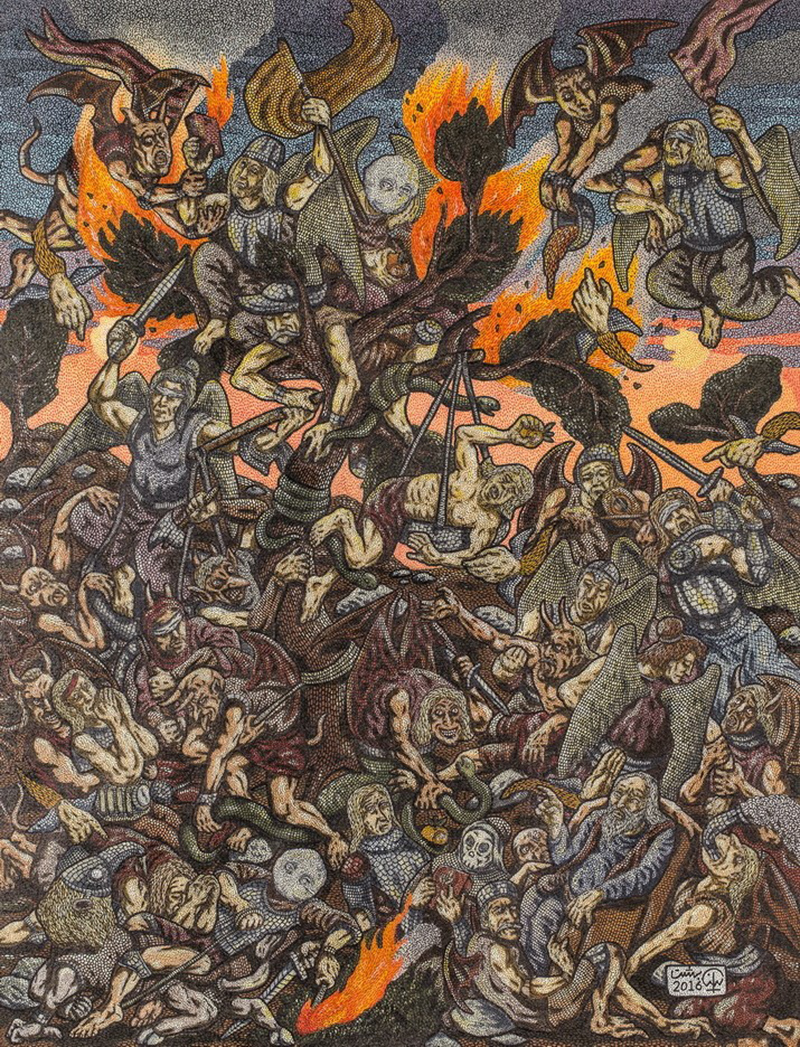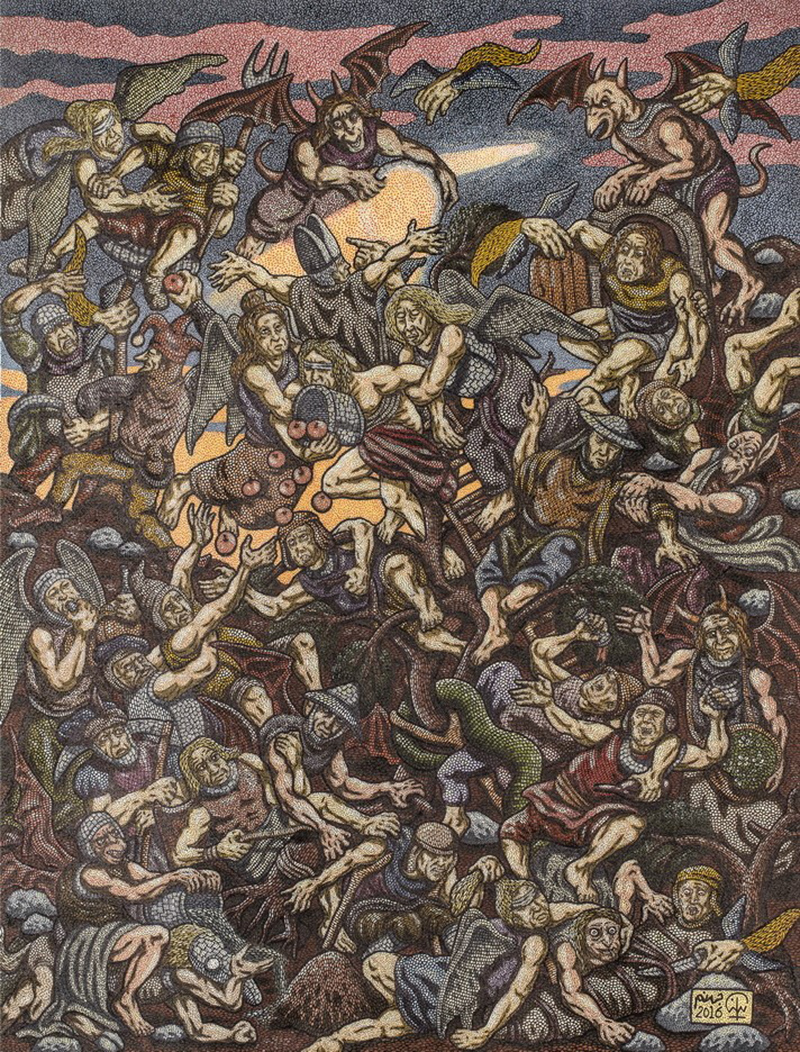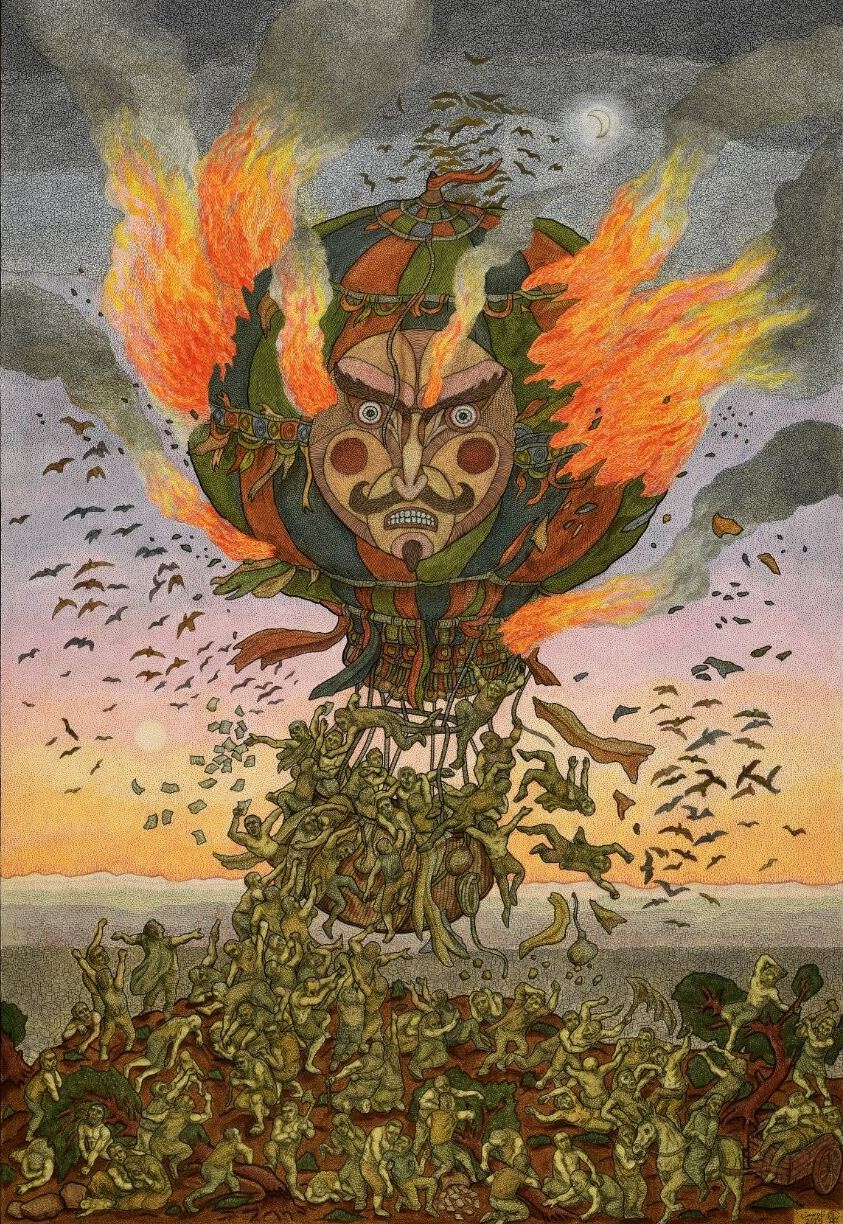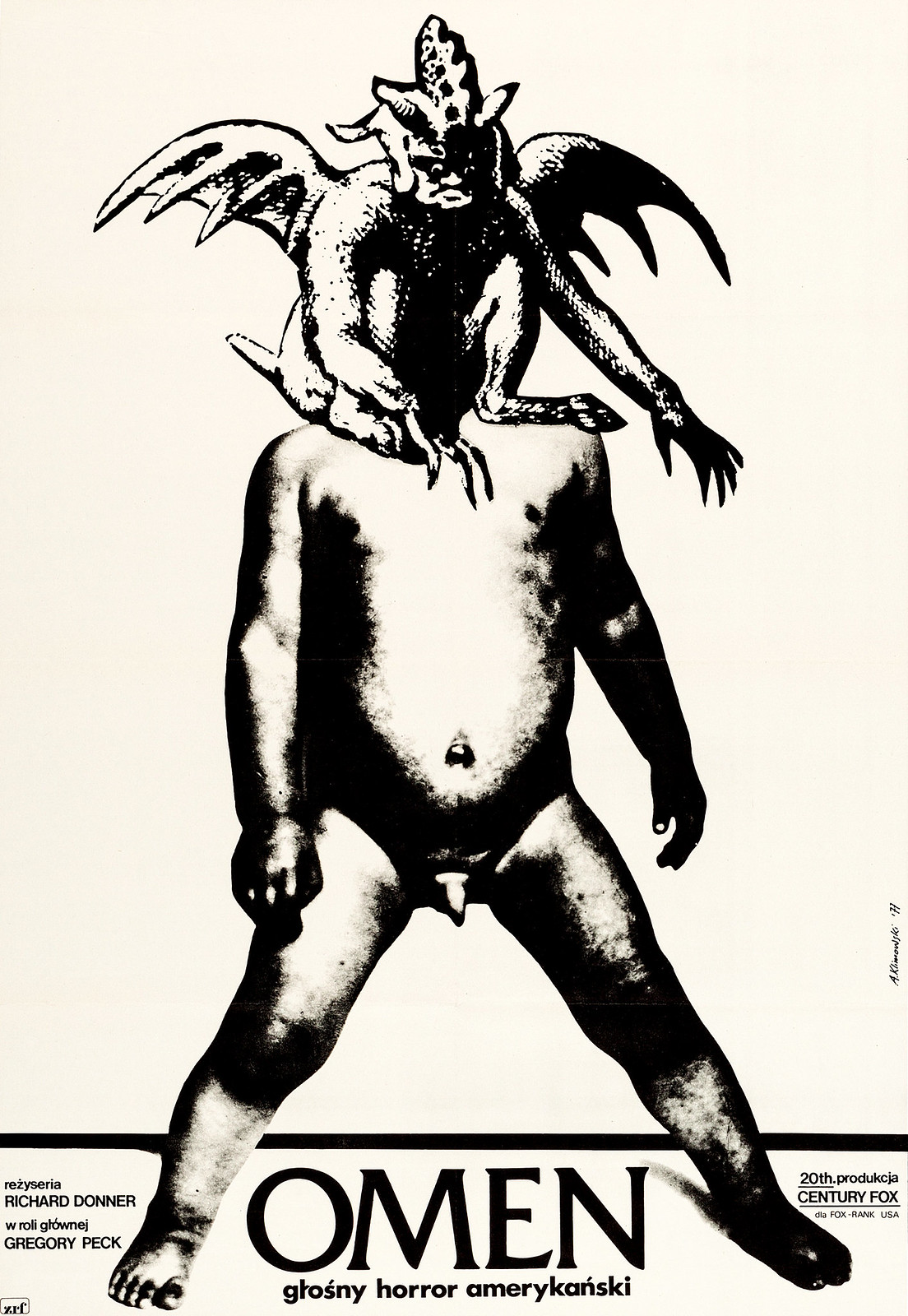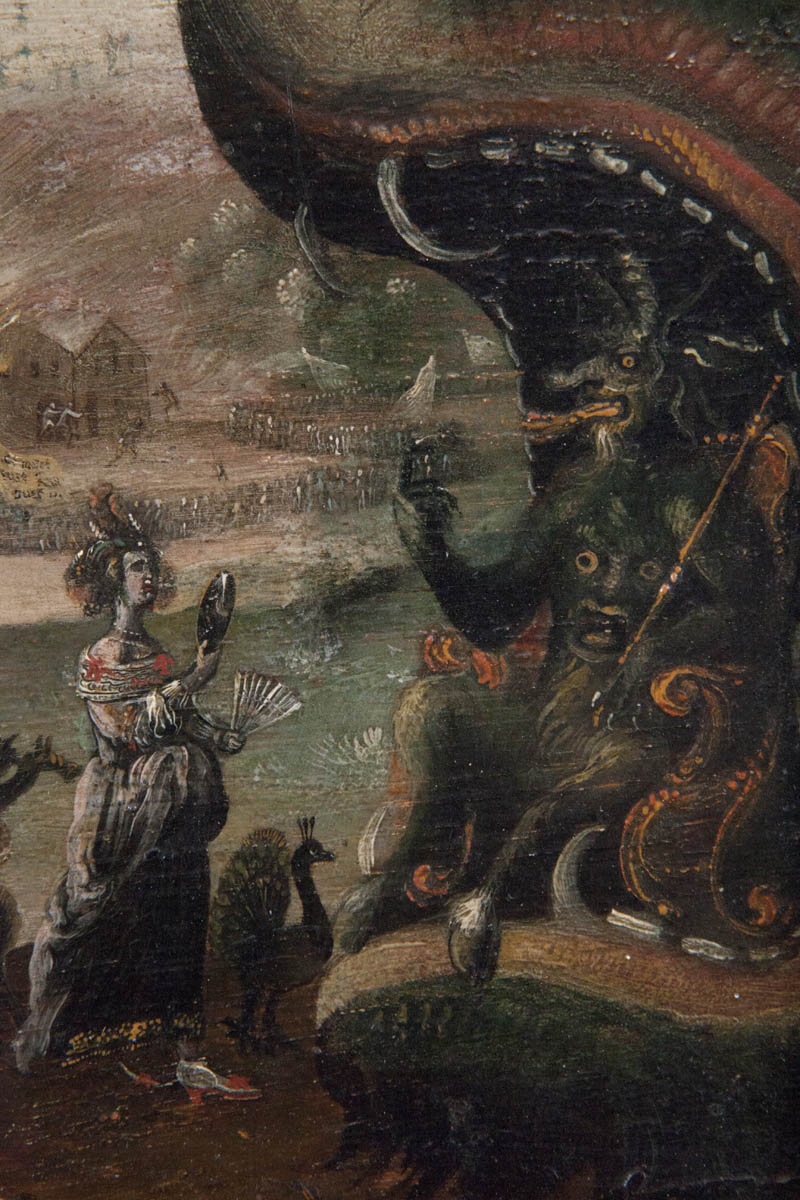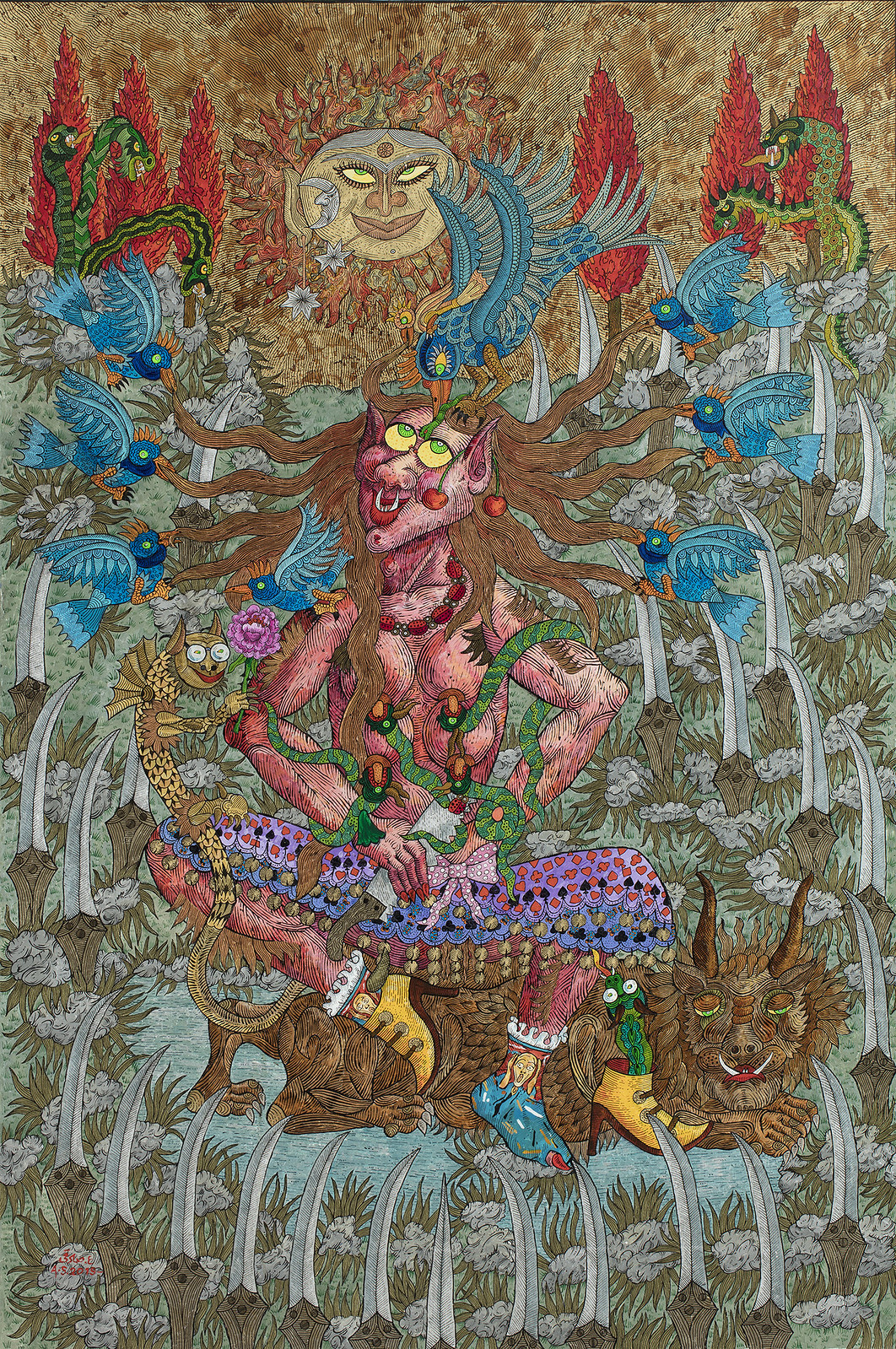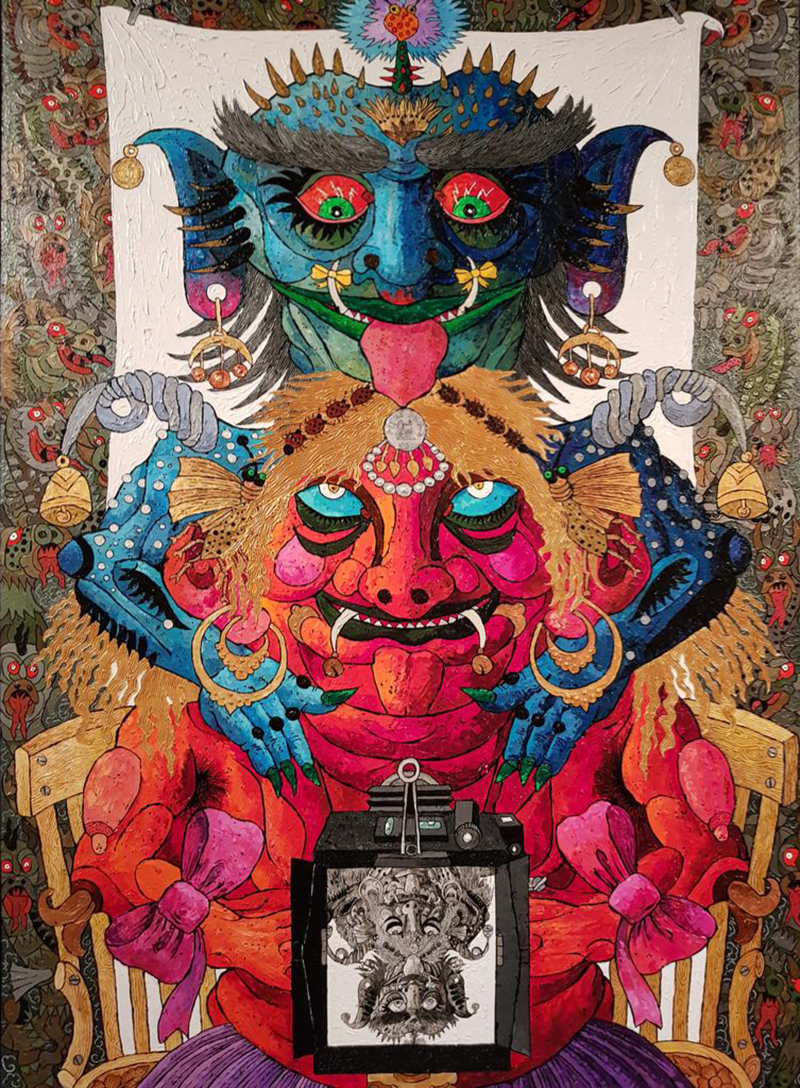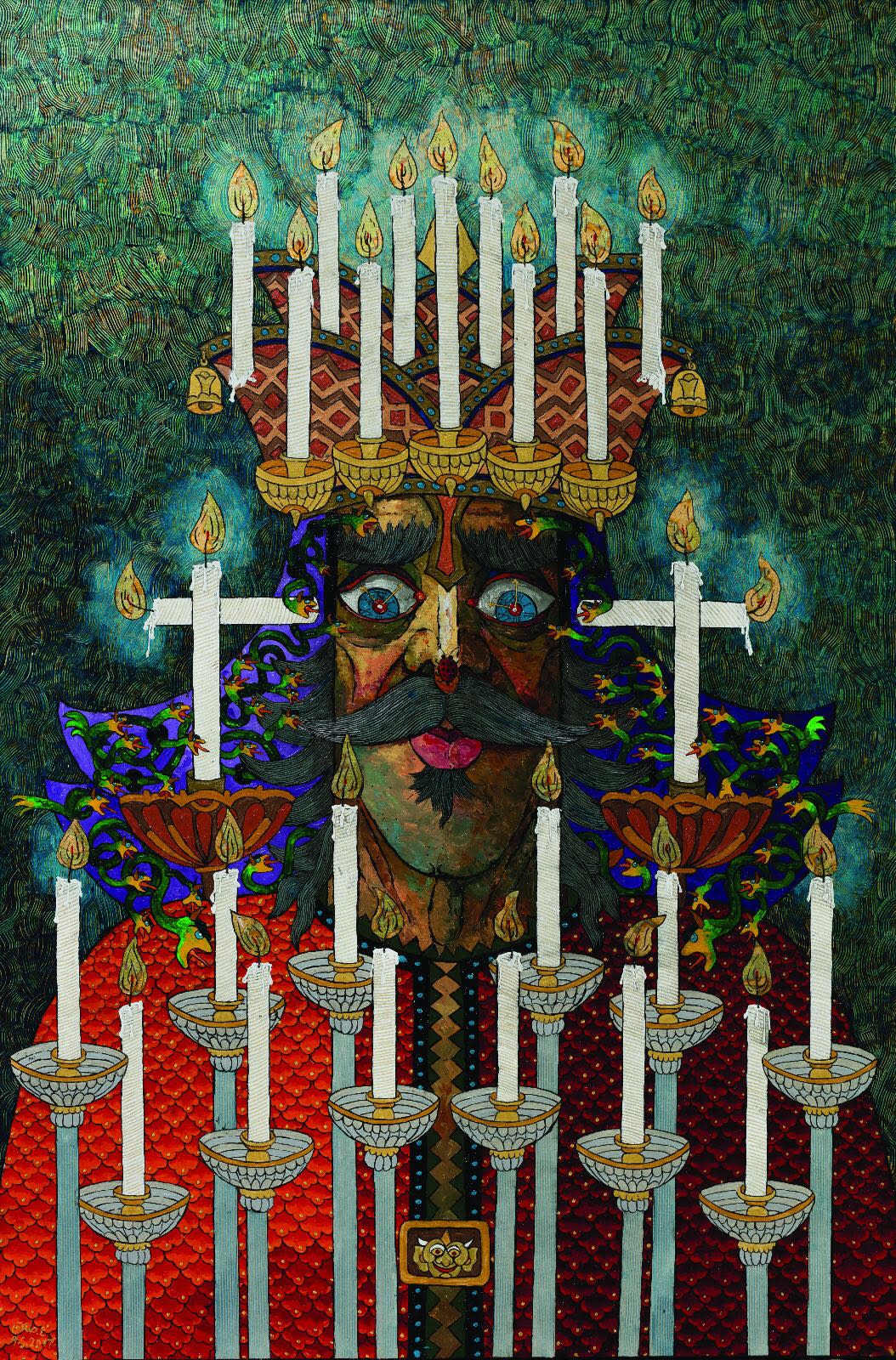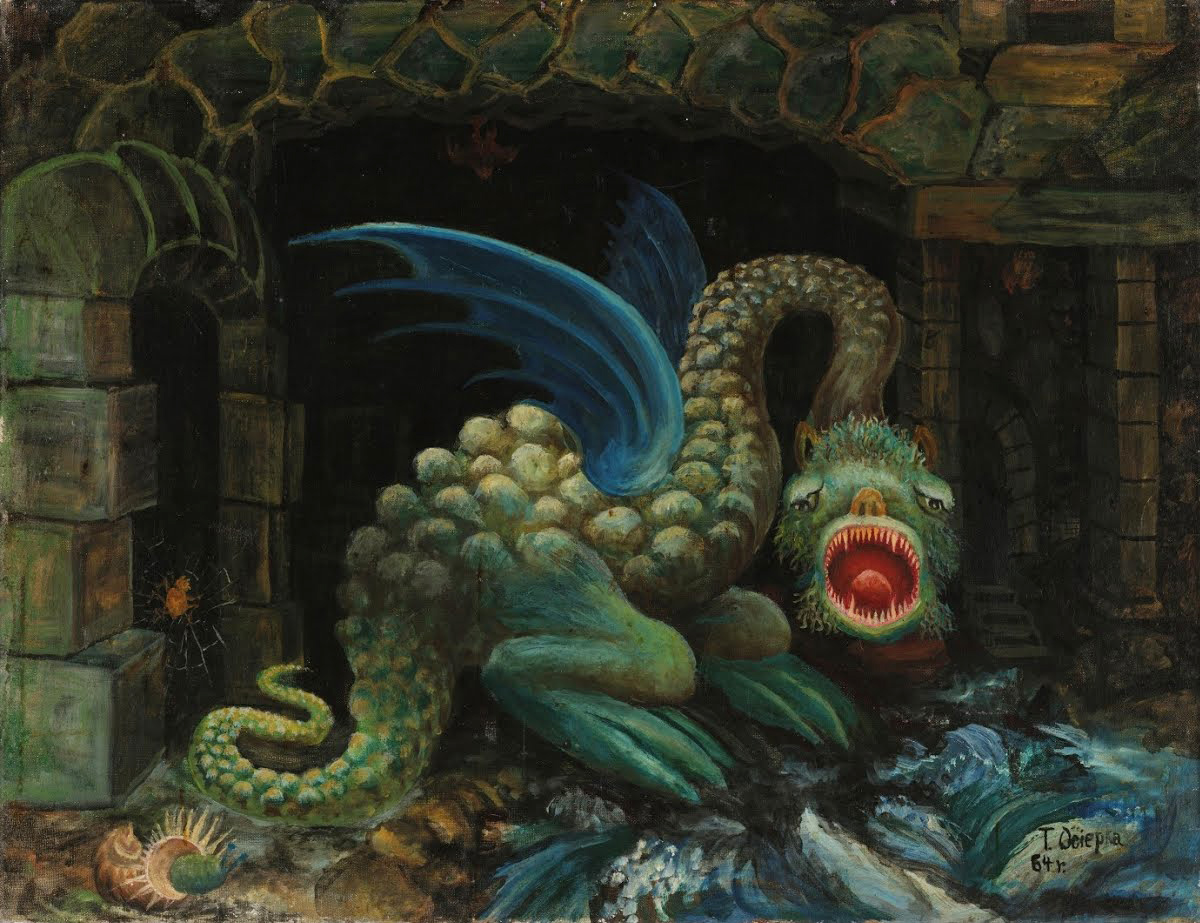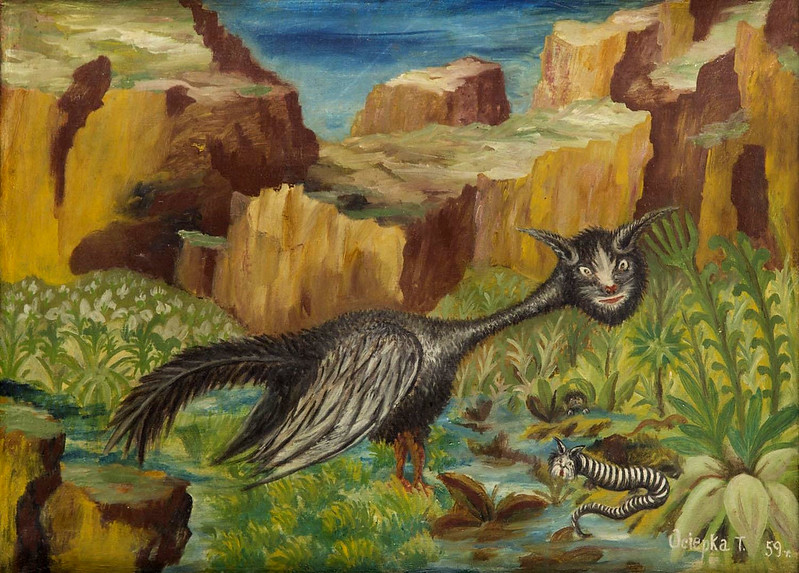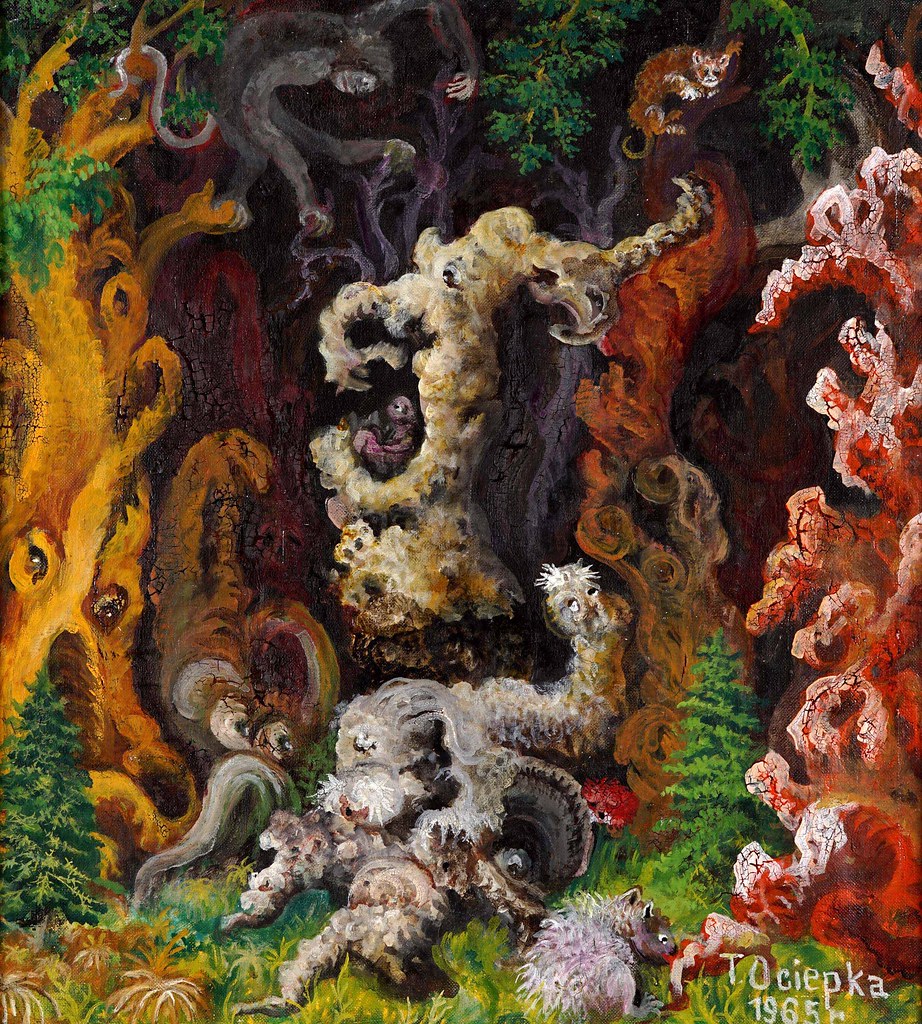Monster Brains
Cvijeta Job - Illustrations from “Potjeh” by Ivana Brlic-Mazuranic, 1975
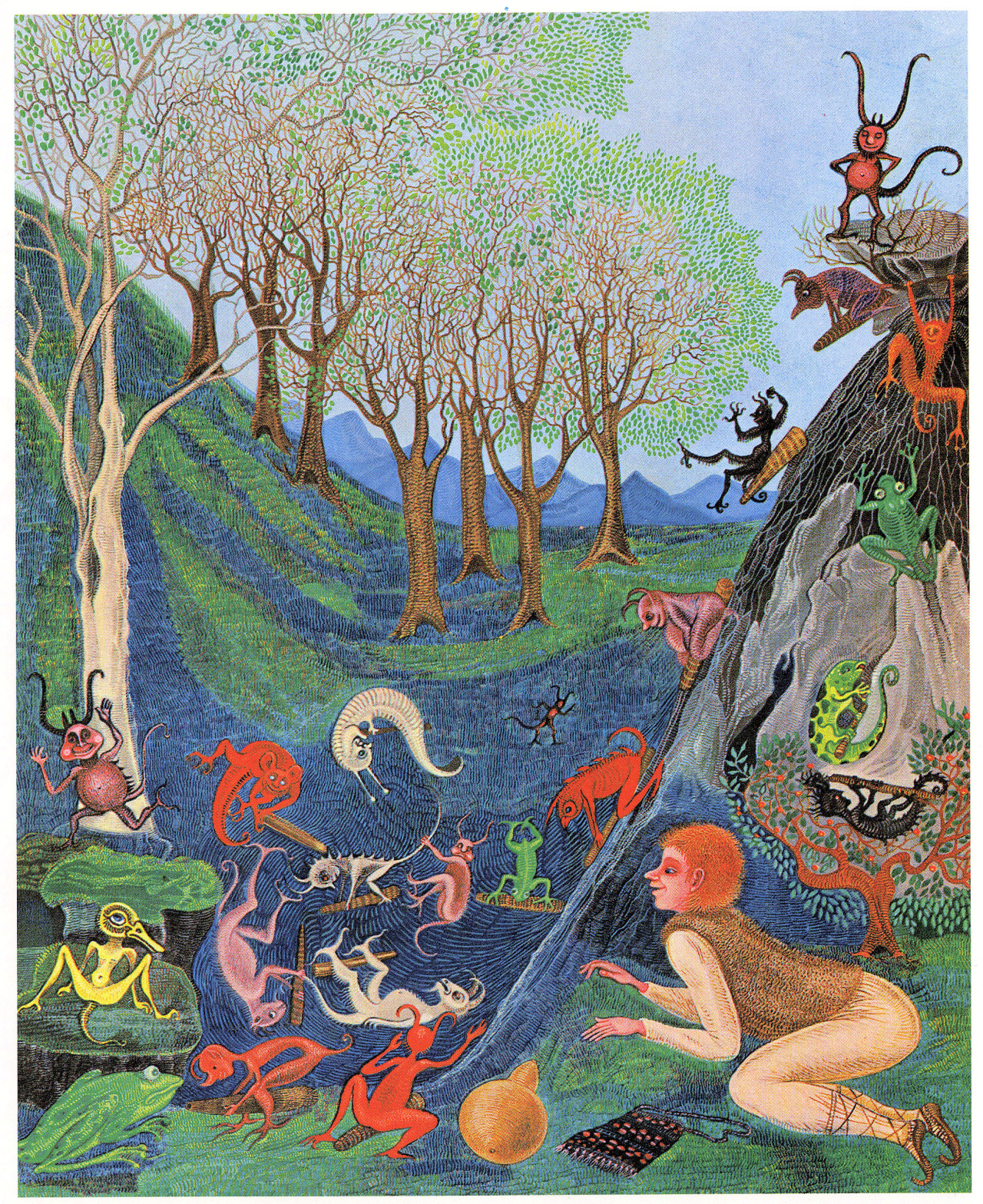
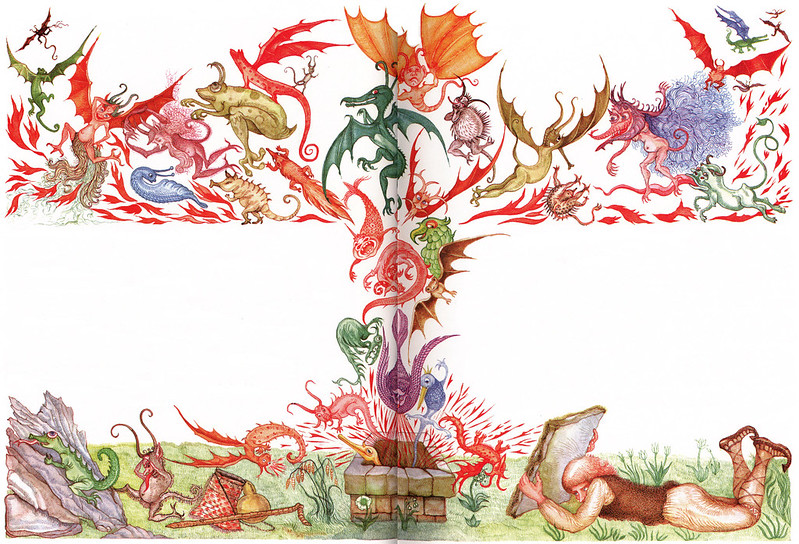
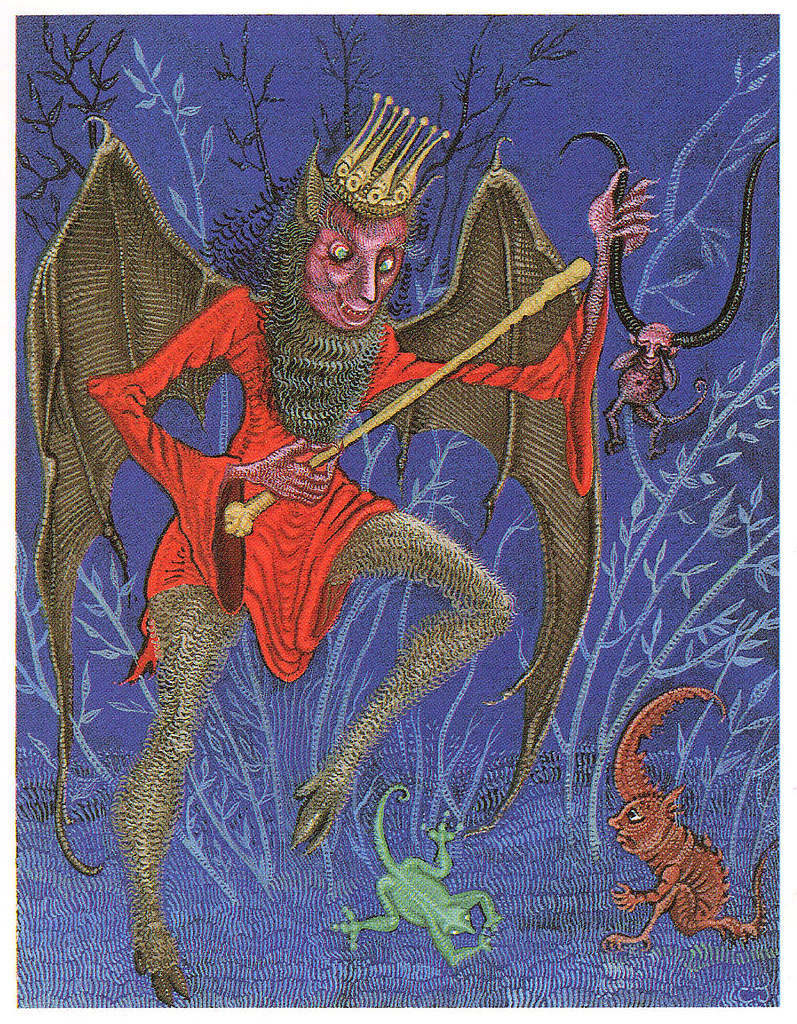


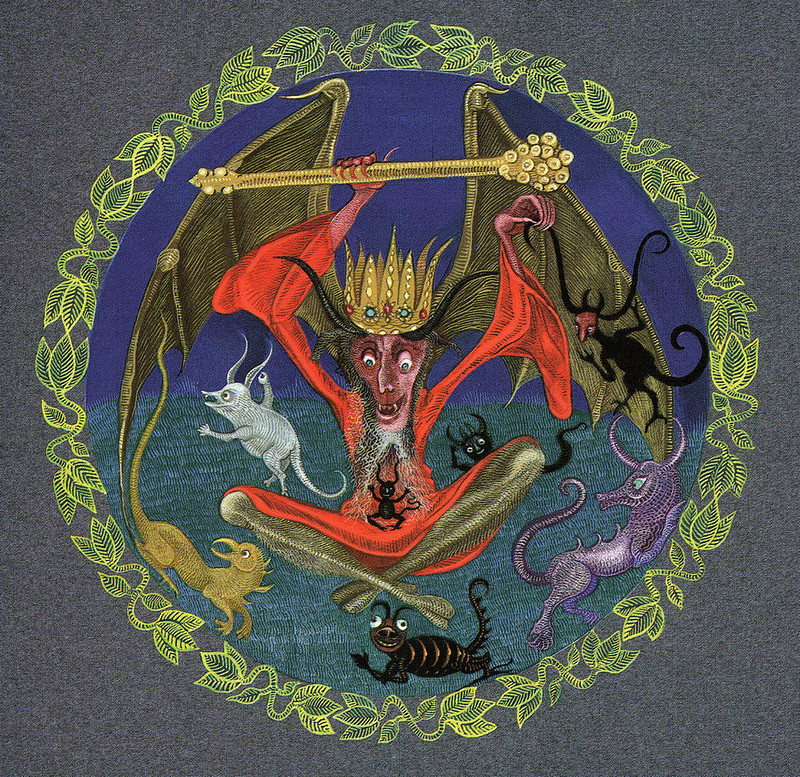



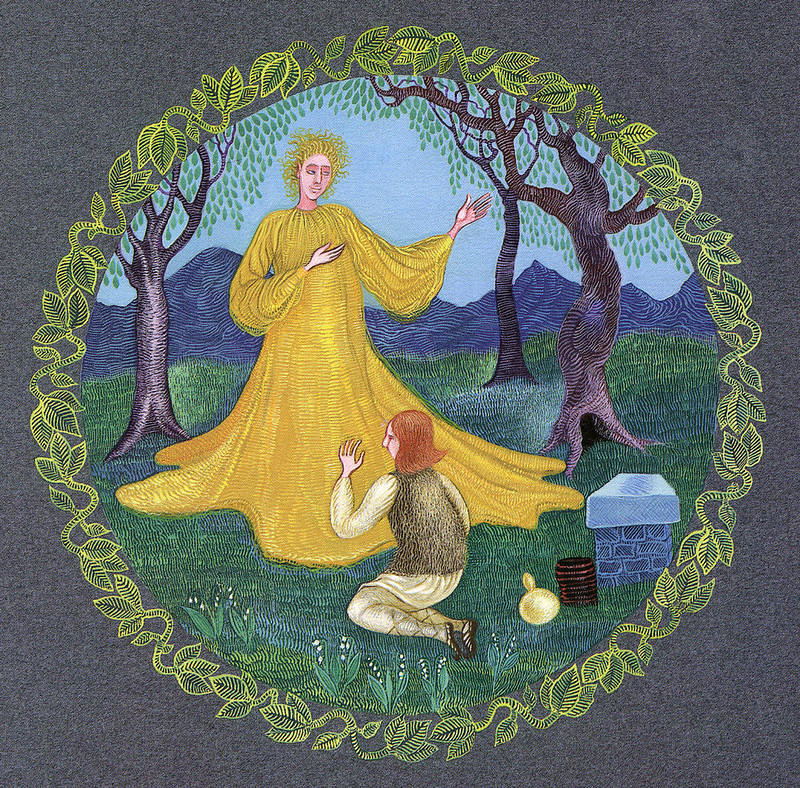
”The story is about a grandfather and his three grandchildren. They have to choose between good and evil where good represents the god Svarozic who is the son of the god Svarog. The evil represents the master of anger. His name was Bjesomar. The purpose of these stories is to find the meaning of what one’s heart desires.” - quote source and images found thanks to Notes From A Superfluous Man.
You can view the complete art from this book here.
Below are a few additional artworks by the artist..
 Illustration for Mira Boglic's Suma Od Koralja - Zagreb, Nasa Djeca
Illustration for Mira Boglic's Suma Od Koralja - Zagreb, Nasa Djeca 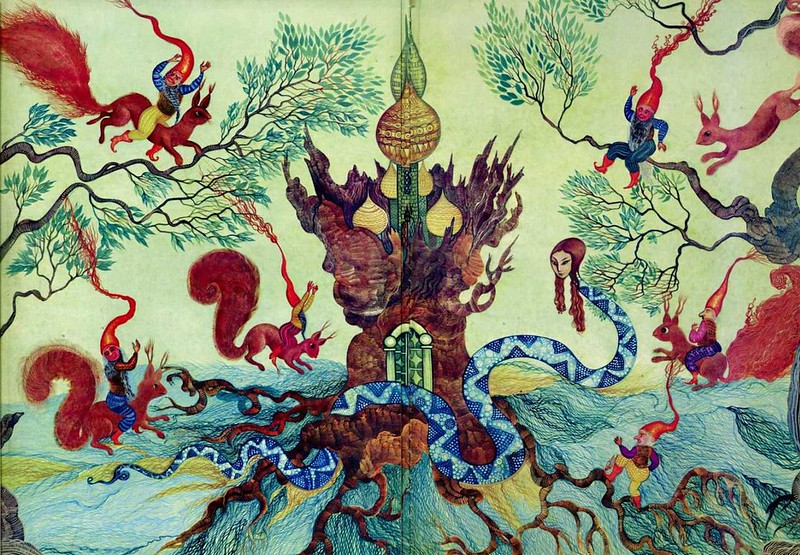 Illustration for Ivana Brlić-Mažuranić - Stribor's Forest, 1981
Illustration for Ivana Brlić-Mažuranić - Stribor's Forest, 1981 Francesco Scaramuzza - Dante's Inferno, Canto XXXIV, 19th C
Jonas Suyderhoef - Hell (After Rubens) 1623
Painting of the legendary Tarasque, 1788
 Artist unknown. An earlier post on the Tarasque can be found here.
Artist unknown. An earlier post on the Tarasque can be found here. Circle of Friedrich Brentel the Elder - A Witches Sabbath at the Full Moon, 1580-1651
Carl Krenek - Hansel and Gretel, 1913
 Artwork found at the imKinsky auction house.
Artwork found at the imKinsky auction house. Franz von Zülow - The Witch's Kitchen, Early-Mid 20th C
 Artwork found at the imKinsky auction house.
Artwork found at the imKinsky auction house. Follower of Hieronymus Bosch - The Pedlar
 Artwork found at the imKinsky auction house.
Artwork found at the imKinsky auction house. Amin Montazeri
Ernst Nepo - Aus einem anderen Leben / From Another Life, 1940-49
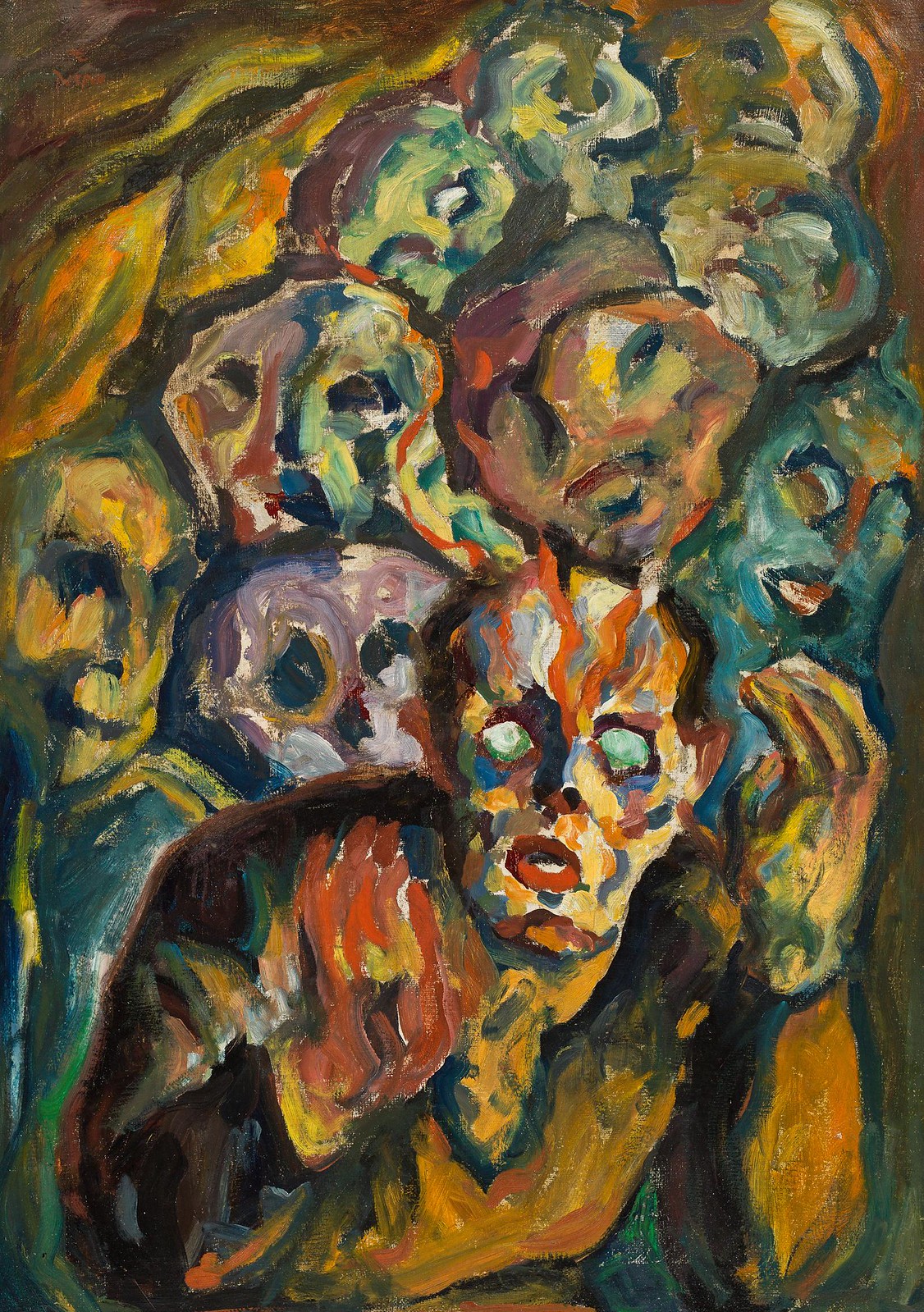 Artwork found at the imKinsky auction house.
Artwork found at the imKinsky auction house. Andrzej Klimowski
Followers of Jacob van Swanenburgh, circa 16th Century
George Beattie - John o' Arnha'; to which is added The Murderit Mynstrell, & other Poems, 1826
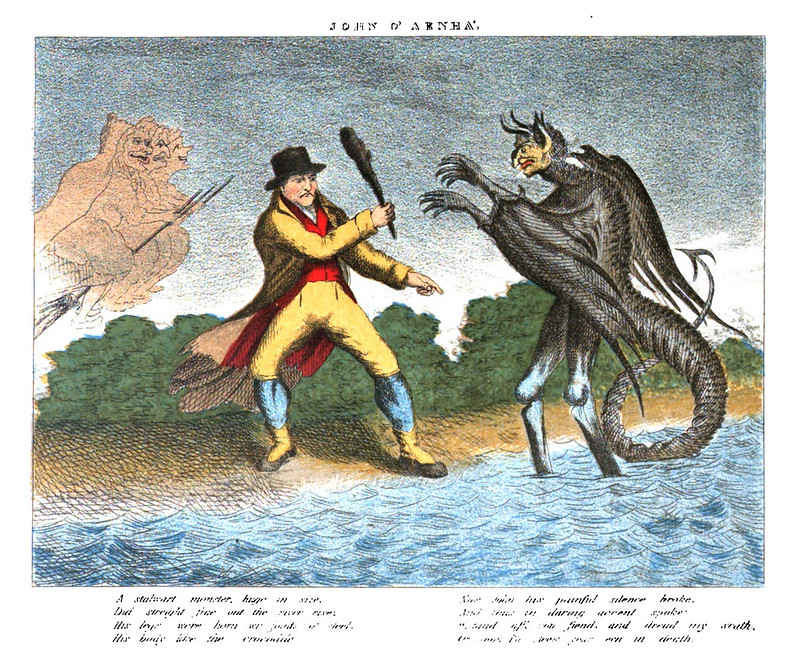
 "A stalwart monster, huge in size, Did streight frae out the river rise, His legs were horn, wi joints o' steel, This body like a crocodile..."
"A stalwart monster, huge in size, Did streight frae out the river rise, His legs were horn, wi joints o' steel, This body like a crocodile..." 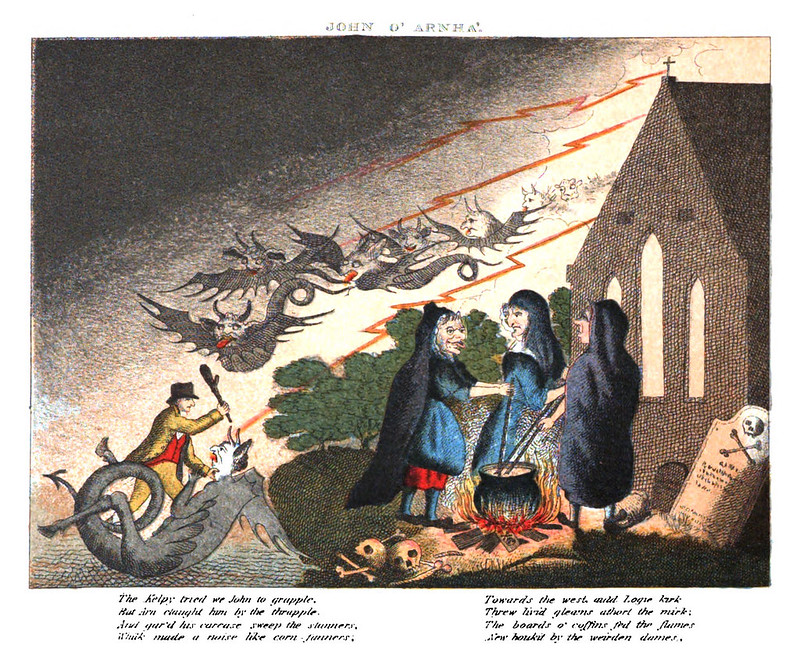
 "Grim furies spread their forkit fangs, An drove at John wi furious bangs..."
"Grim furies spread their forkit fangs, An drove at John wi furious bangs..." 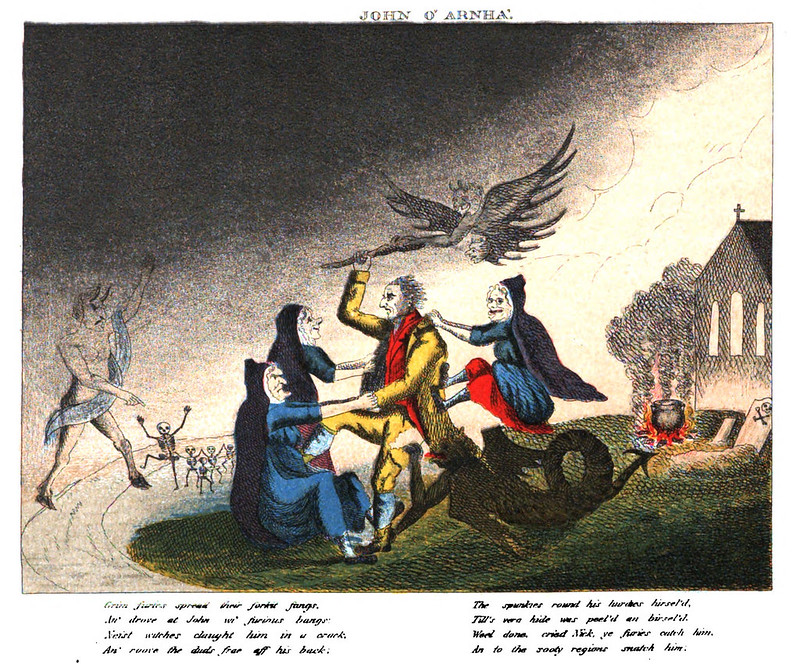
 "The Kelpy tried we John to grapple, But Arn caught him by the thrapple, And gar'd his carcase sweep the stanners, Whilk made a noise like corn fanners..."
"The Kelpy tried we John to grapple, But Arn caught him by the thrapple, And gar'd his carcase sweep the stanners, Whilk made a noise like corn fanners..." 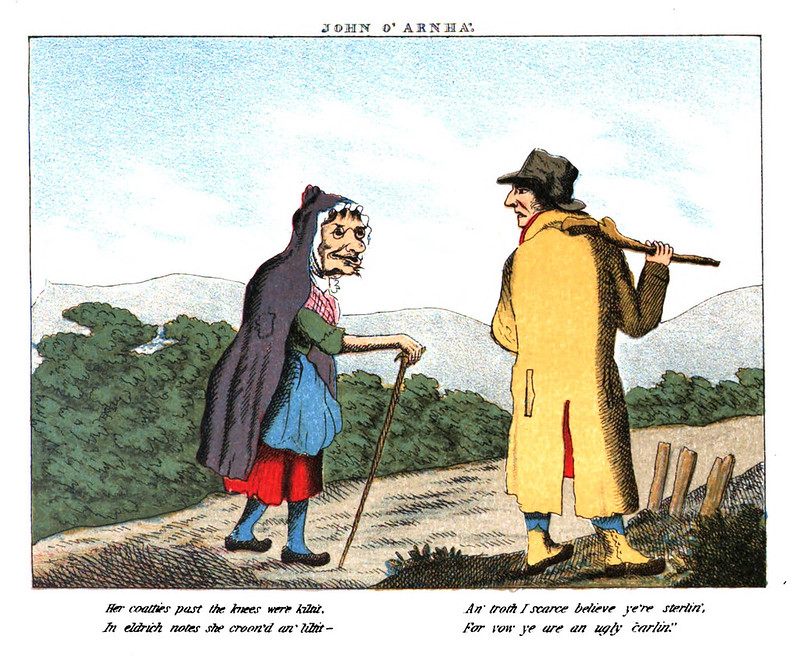
 "Her coatties pat the knees were kiltit, In eldrich notes she croone'd an' liltit..."
"Her coatties pat the knees were kiltit, In eldrich notes she croone'd an' liltit..." 
 "Sae fently did she wing her flight, In a twinklin' she was out o' sight... "
"Sae fently did she wing her flight, In a twinklin' she was out o' sight... "You can read the book in its entirety at Google Books. The higher resolution images found thanks to Spl Hand Colored Rare Book Collection.
Richard Doyle - Witches and Dragons, late 19th Century
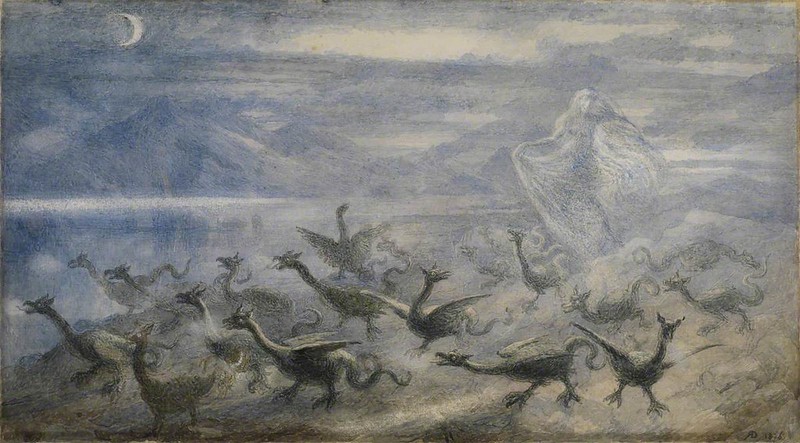 Moonlit Landscape, with a Witch and Young Dragons, 1876
Moonlit Landscape, with a Witch and Young Dragons, 1876 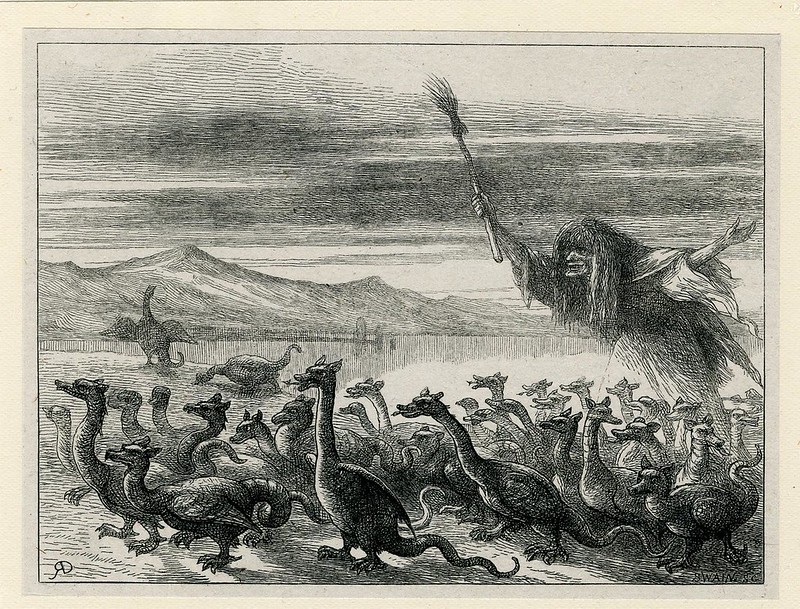 After Richard Doyle - Witch Guiding Dragons, late 19th Century
After Richard Doyle - Witch Guiding Dragons, late 19th Century Previous posts on Richard Doyle inlude a collection of his Jack the Giant killer illustrations, An assortment of dozens more of his paintings and drawings and the first post from 2007 including a smaller image of the witch with dragons painting.
Also shared last year was a post on Richard's artistic brother and father to Sir Arthur Conan Doyle, Charles Altamont Doyle.
Ali Akbar Sadeghi
 Demon 01, Satan & Soul series, 2017
Demon 01, Satan & Soul series, 2017

 Illustration from "Travels of Sandbad" by Mohammad Ali Sepanloo
Illustration from "Travels of Sandbad" by Mohammad Ali Sepanloo
 Melli Bank Reproduced, Retell Collection, Film cell on canvas, 2015
Melli Bank Reproduced, Retell Collection, Film cell on canvas, 2015
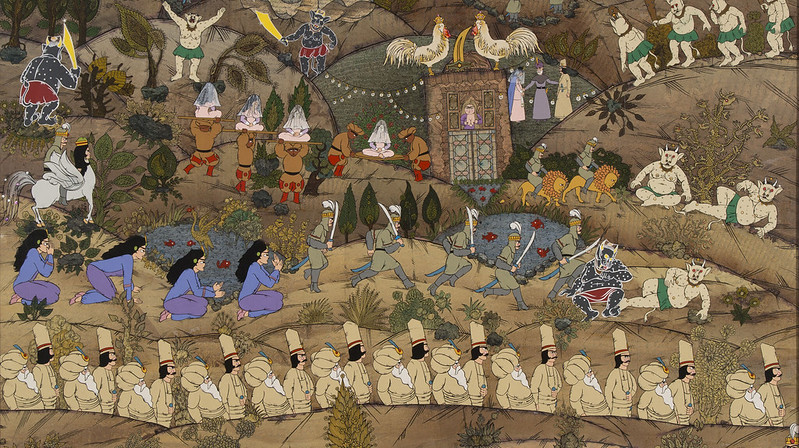 Boasting Reproduced, Retell Collection, Film cell on canvas, 2015
Boasting Reproduced, Retell Collection, Film cell on canvas, 2015
 Photo of Ali in his North Tehran studio
Photo of Ali in his North Tehran studio
"Sadeghi is one of the most prolific and successful Iranian painters and artists from the second half of the 20th century to today. Born in 1937, Sadeghi is famous for his drawings, paintings and films are part of a well developed Iranian surrealist movement which was prominent from the 1970's until today.
Much of Sadeghi's inspiration comes from historical books including the Shahnameh where he uses cultural motifs and myths for the basis of his work. He initiated a special style in Persian painting, influenced by Coffee House painting, iconography, and traditional Iranian portrait painting, following the Qajar tradition - a mixture of a kind of surrealism, influenced by the art of stained glass." - quote source
Artworks found at 50 Watts, The Real Riviera, Dastan Gallery and the artist's official site.
See more at an instagram account devoted to the artist.
With The Master from Reza Sayah on Vimeo.
Péter Pócs - Hungarian Theatrical Posters
 András Sütő- Adventures in Gandy-Wandy Land theatrical poster. 1987
András Sütő- Adventures in Gandy-Wandy Land theatrical poster. 1987  Kecskemét Animation Film Festival, 1985
Kecskemét Animation Film Festival, 1985  A Squished Nighmare, 1987
A Squished Nighmare, 1987  Stuttgart, 1987
Stuttgart, 1987  Dracula
Dracula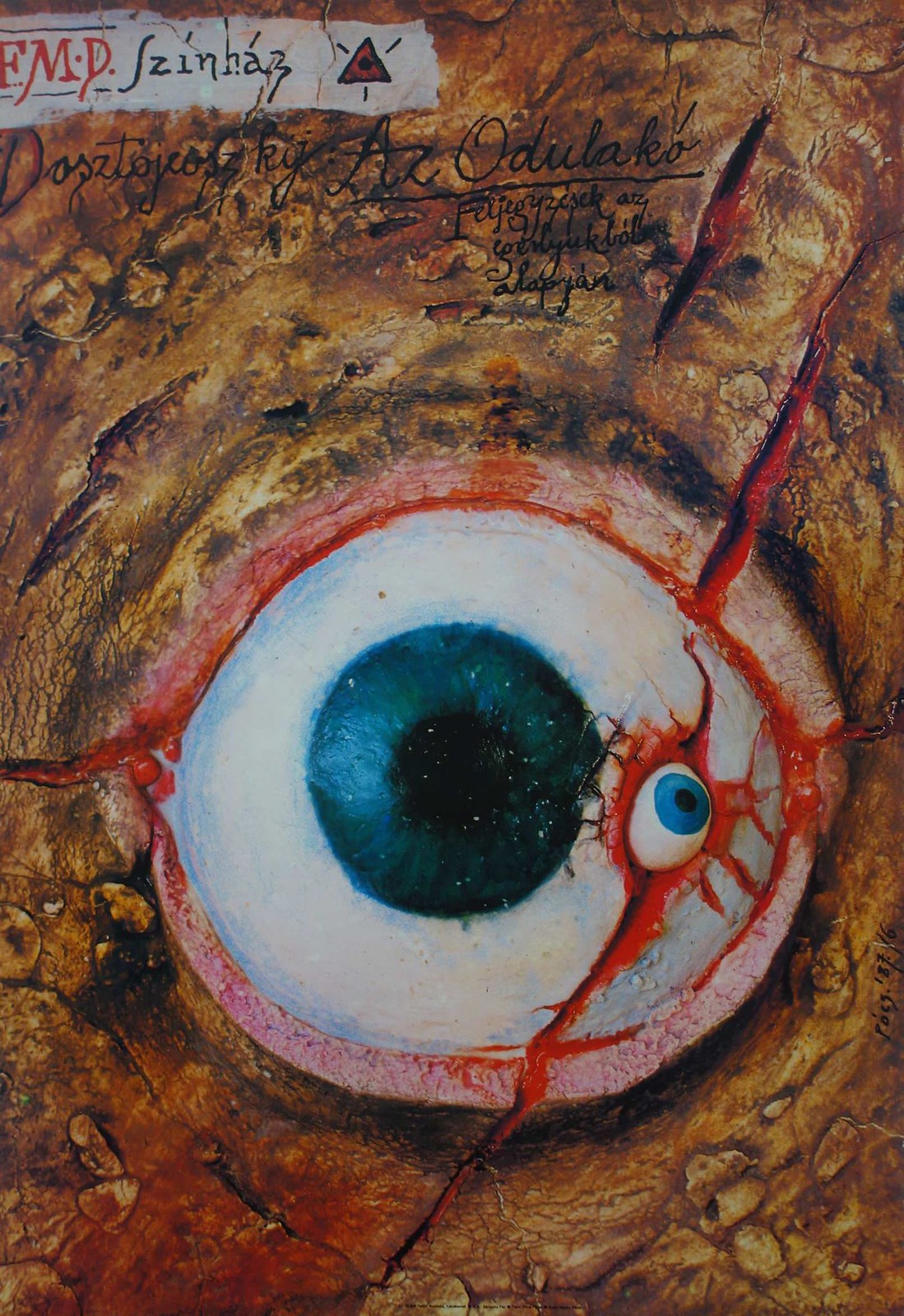 Dostojevsky The Hollow Dweller, 1987
Dostojevsky The Hollow Dweller, 1987  Day of the Cobra poster, 1981
Day of the Cobra poster, 1981  Zsolt Kézdi-Kovács- HUE AND CRY film poster, 1988
Zsolt Kézdi-Kovács- HUE AND CRY film poster, 1988 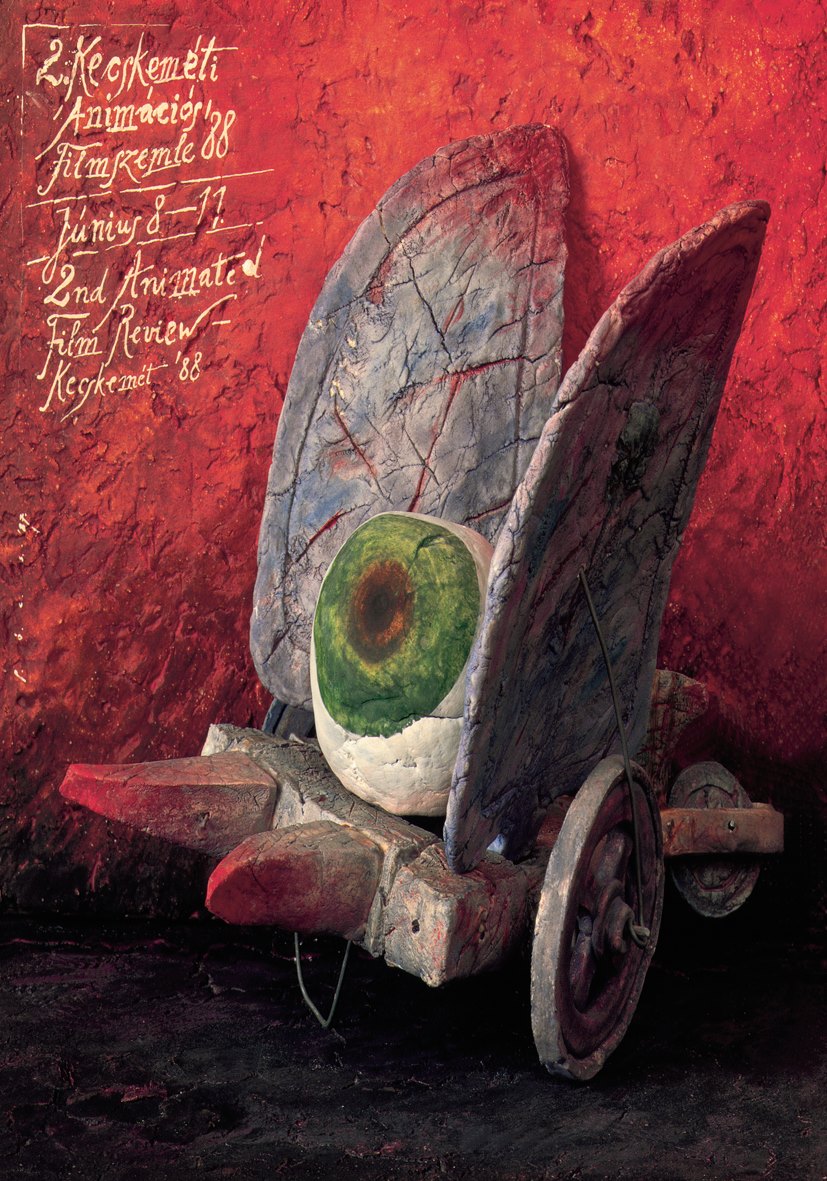 2nd Film Festival of Animated Cartoons of Kecskemét, 1988
2nd Film Festival of Animated Cartoons of Kecskemét, 1988 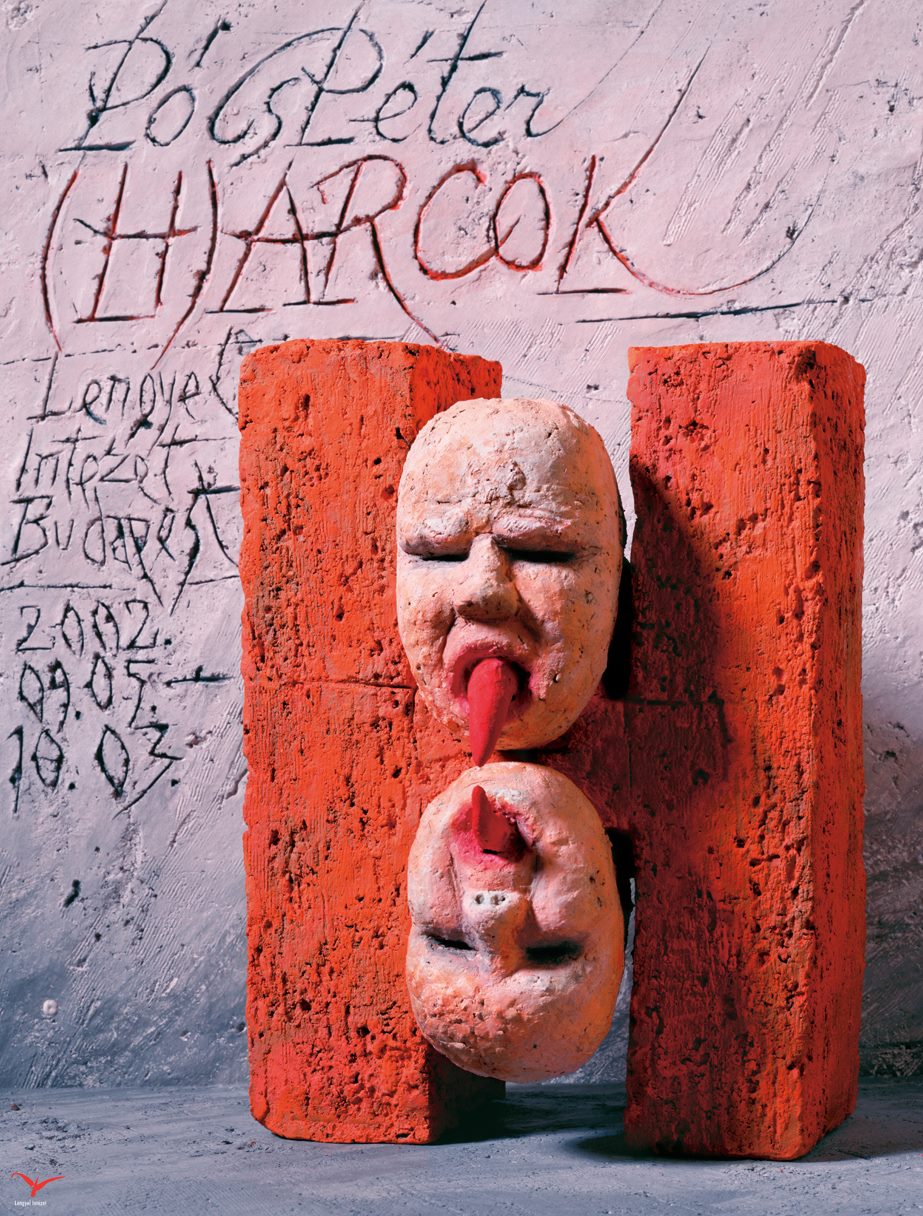 FIGHTS FACES poster, 2002
FIGHTS FACES poster, 2002  József Katona- Ban Bánk, 1987
József Katona- Ban Bánk, 1987 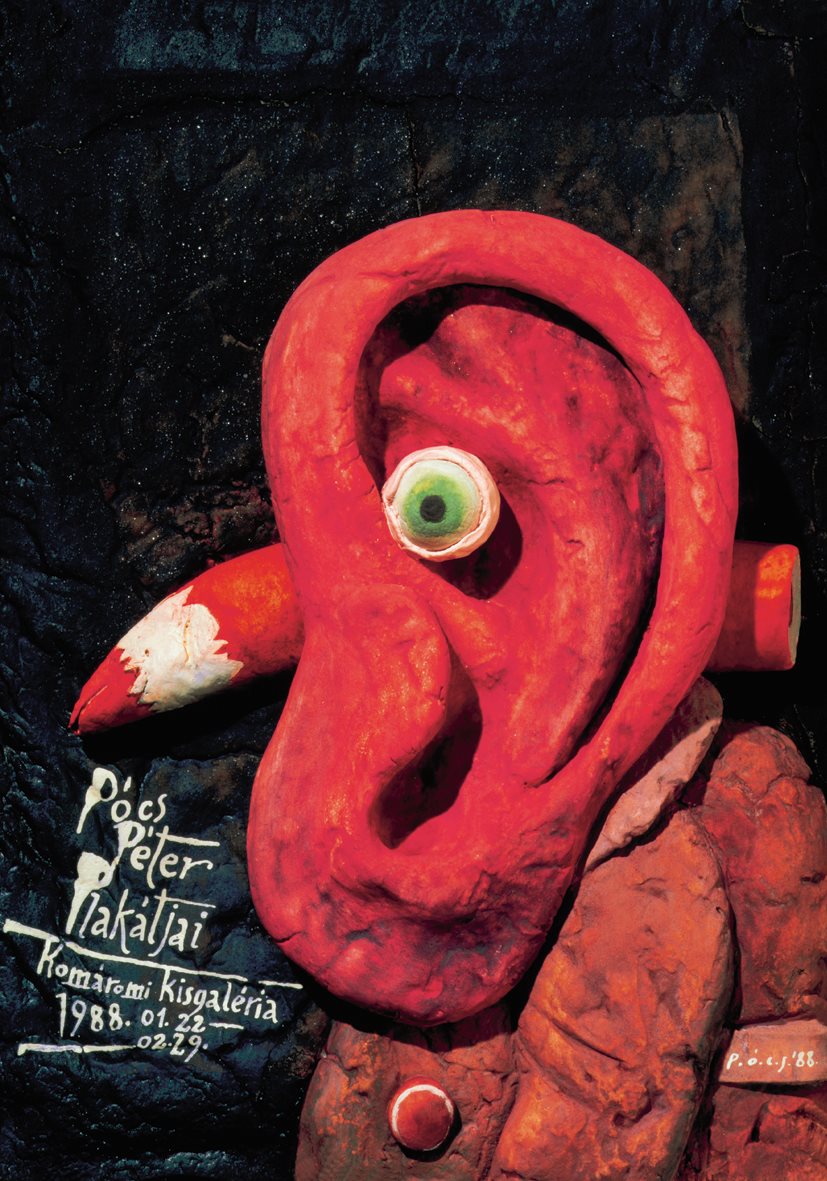 Péter Pócs's Posters, 1988
Péter Pócs's Posters, 1988  HUNGARY IN HOLLAND (art exhibition poster, 1987)
HUNGARY IN HOLLAND (art exhibition poster, 1987) 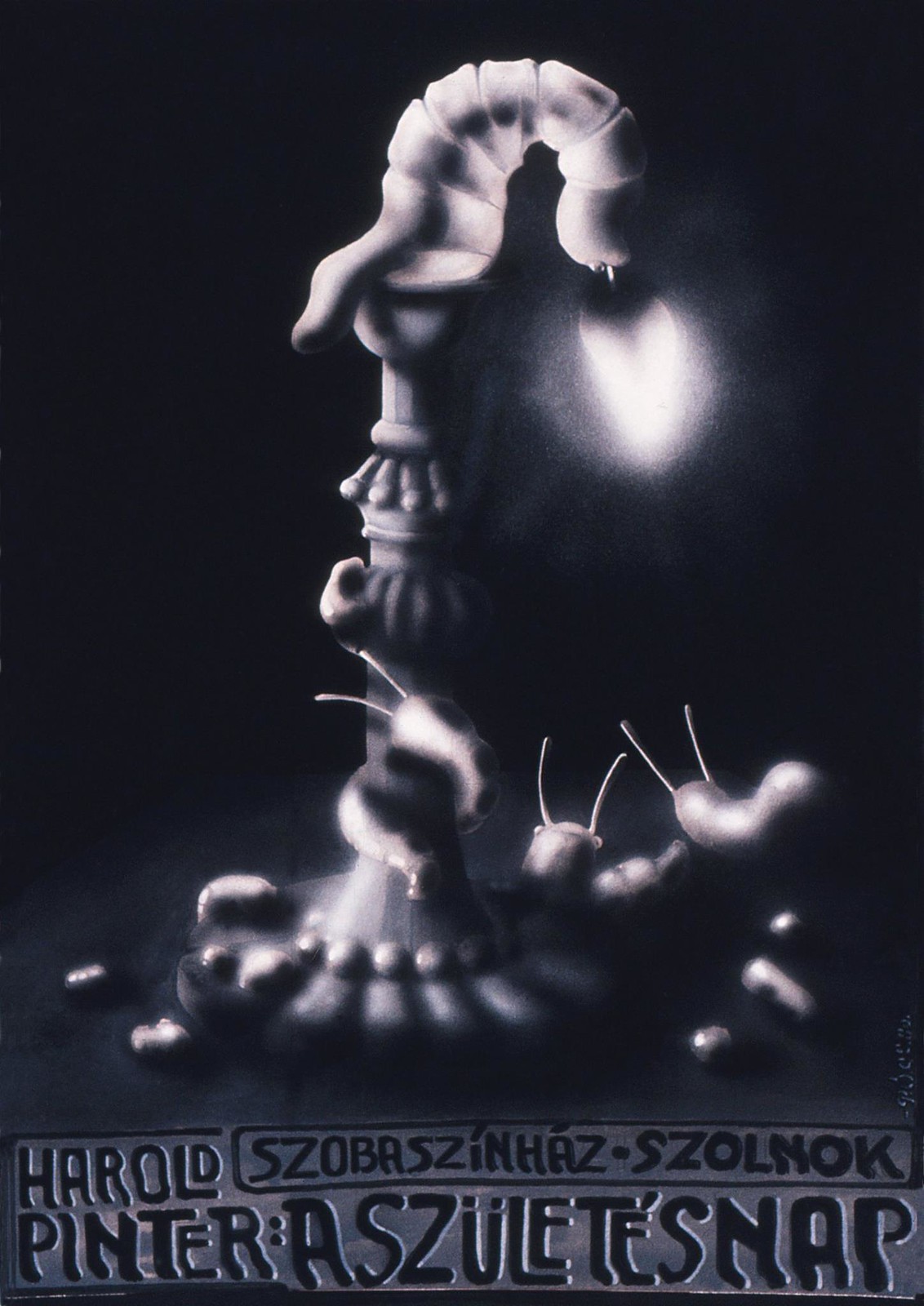 Harold Pinter- The Birthday Partry, 1980
Harold Pinter- The Birthday Partry, 1980  Shakespeare- Pericles, 1980
Shakespeare- Pericles, 1980  Sándor Weöres- Peter the Trickster, 1987
Sándor Weöres- Peter the Trickster, 1987Many artworks found at the Poster Museum.
A Hungarian wikipedia article on the artist can be found here.
Teofil Ociepka (1891 – 1978)
 The Spirit of the Forest, 1963
The Spirit of the Forest, 1963
 Teofil Ociepka with his family, 1973, photo by Janusz Rosikoń
Teofil Ociepka with his family, 1973, photo by Janusz Rosikoń
"Teofil Ociepka (April 22, 1891 in Janów Śląski – January 15, 1978 in Bydgoszcz) was a Polish self-taught primitivist painter, occultist, and theosophist. Along with Nikifor, he was one of the best known Polish primitivists.
His occupation was a miner, working at the Giesche's coal mine in Katowice as a machinist in the power plant. During World War I he served as a soldier in the German Army, where he was introduced to occultism. When he returned to Janów, he brought back with him the first works on occultism, including Athanasius Kircher's treatise on the Seventy Two Names of God. On the recommendation of his Swiss mentor, Philip Hohmann of Wittenberg, with whom he maintained steady correspondence, Ociepka became a member of the Rosicrucian Lodge and attained the status of Master of Secret Sciences. On Hohmann's direction, he organized a strong occultist community in Janów. He maintained contact with the Julian Ochorowicz Parapsychological Society of Lvov. He believed that he had a spiritual link with his master who telepathically inspired his art. Hohmann persuaded Ociepka to start painting circa 1927. He gave up his attempts in 1930 after receiving criticism from Tadeusz Dobrowolski, a Polish professor of art history and museum curator. He probably returned to painting either before or during World War II.
After the war, he gained a supporter in the author Isabel Czajka-Stachowicz, who in 1948 organized for him an exhibition in Warsaw, promoting him as "Polish Douanier Rousseau." She was aided by her friends, Julian Tuwim and Jan Kott. The Warsaw exhibition launched Ociepka's great world-class artistic career.
He saw his painting as God's mission, and so tried to portray absolutist themes, including the struggle between Good and Evil. His paintings depicting the imaginary fauna and flora of Saturn relate to the Rosicrucian ideology. During the early 1950s, in an attempt at political correctness, they were interpreted as Paleozoic Era landscapes. Later, his works depicted themes from fairy tales, legends, and lives of miners. They are characterized by wealth of imagination and bright, rich colors. The themes of his works, especially those from before 1956, were criticized as not adhering to the canon of socialist realism.
In 1946 Ociepka partnered with Otto Klimczok to found an art group. In 1947 the group was reorganized as an Art Circle associated with the Cultural Center "KWK Wieczorek", which during the 1950s provided a base for a talented group of amateur artists. The group was known as "Janowska Group" after its birthplace, or more formally, as the Circle of Non-professional Painters. Ociepka was a member until 1959, when he permanently moved to join his wife in Bydgoszcz. Under her influence he broke contact with the Janowska Group and distanced himself from occultism. He died on January 15, 1978 from a brain aneurysm." - quote source
"One of the most interesting esoteric-related moments in Teofil Ociepka’s life was his awakening as a painter. Ociepka believed that it was Hohmann who made him an artist with a spiritual purpose. He claimed: “[Hohmann] wrote to me: ‘Teofil, a spirit will come to you and will teach you how to paint.’ I have never seen any spirit, but something Teofil Ociepka - Malarz. Fot. Eustachy Kossakowski/FORUM.undefined was born in my soul, which could be called love for the essence of beauty, that is for God. That was in 1927 and, from that time on, I began to paint and have been painting ever since with unfaltering joy and pleasure.” (Wisłocki 2010:43). " - quote source
The following is a plot description of the 2002 film "Angeleus" directed by Lech Majewski that centers around the artist and his familiar circle of painters.. "In the Polish town of Janow, during the 1930s, an occult commune was formed around Teofil Ociepka, an electrician at the local coal mine and a painter, who became a Master of Esoteric Science. Ociepka and his disciples, simple uneducated miners, searched for the Philosophers Stone and pursued spiritual perfection, which would permit them to penetrate the Principle and the Sense of the World and of God, to reach the mystery of Existence. Their activities combined elements of occultism, alchemy and theosophy with archaic and magical Silesian beliefs. During the bleak desert of the Stalinist era, the "Circle of Janow" marked a colorful metaphysical oasis, and its existence was consequently falsified by the authorities of the People's Republic of Poland." - quote source
While difficult to find, a version of the film in its original language, regrettably without subtitles, was shared on youtube.
An article on the group of coal miner artists associated with Ociepka "Janowska Group" or "the Circle of Non-professional Painters" can be found at Culture.PL "Beneath the Surface: The Occult Inspirations of Poland’s Legendary Naive Artist Coal Miners"
John Kettelwell (1890 - 1933)
 The Claw snd a WItch, 1916-30
The Claw snd a WItch, 1916-30 ![a lay of the Higher Law. Translated and annotated by ... F. B. [i.e. Frank Baker, pseudonym of Sir R. F. Burton; or rather, written by Sir R. F. Burton.]]](https://live.staticflickr.com/65535/50992970288_7cbf6e69ee_h.jpg) The Ghoul, Illustration from "The Kasîdah of Hâjî Abdû El-Yezdî" Translated and annotated by ... F. B [i.e. Frank Baker, pseudonym of Sir R. F. Burton, 1925
The Ghoul, Illustration from "The Kasîdah of Hâjî Abdû El-Yezdî" Translated and annotated by ... F. B [i.e. Frank Baker, pseudonym of Sir R. F. Burton, 1925  Ballet Efritois - Illustration from "The Story of Aladdin and the Wonderful Lamp," 1928
Ballet Efritois - Illustration from "The Story of Aladdin and the Wonderful Lamp," 1928  The Slaves of the Lamp and the Ring - Illustration from "The Story of Aladdin and the Wonderful Lamp," 1928
The Slaves of the Lamp and the Ring - Illustration from "The Story of Aladdin and the Wonderful Lamp," 1928  Abahnahzur - Illustration from "The Story of Aladdin and the Wonderful Lamp," 1928
Abahnahzur - Illustration from "The Story of Aladdin and the Wonderful Lamp," 1928  The Emir Aladdin, in Armour - Illustration from "The Story of Aladdin and the Wonderful Lamp," 1928
The Emir Aladdin, in Armour - Illustration from "The Story of Aladdin and the Wonderful Lamp," 1928 Robert Stewart Sherriffs (1906 - 1960)
 What Madballs designed in the British Art Nouveau style would look like..
What Madballs designed in the British Art Nouveau style would look like.. 
 Illustrations from "The Life and Death of Tamburlaine the Great" by Christopher Marlowe, 1930
Illustrations from "The Life and Death of Tamburlaine the Great" by Christopher Marlowe, 1930 You'll find a selection of the artist's colorful artwork illusrtating a 1967 edition of "Rubaiyat of Omar Khayyam" at Ragged Claws Network.









